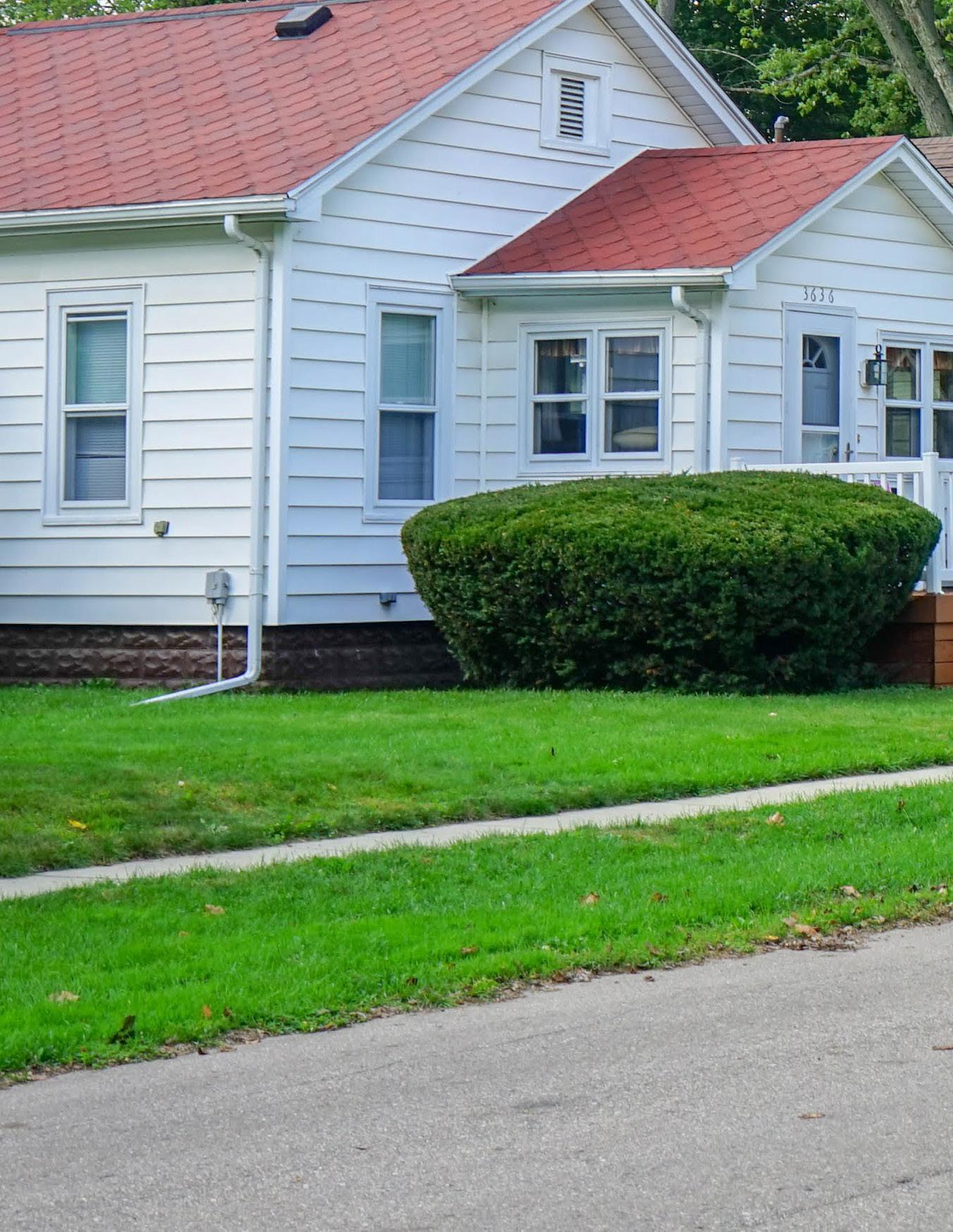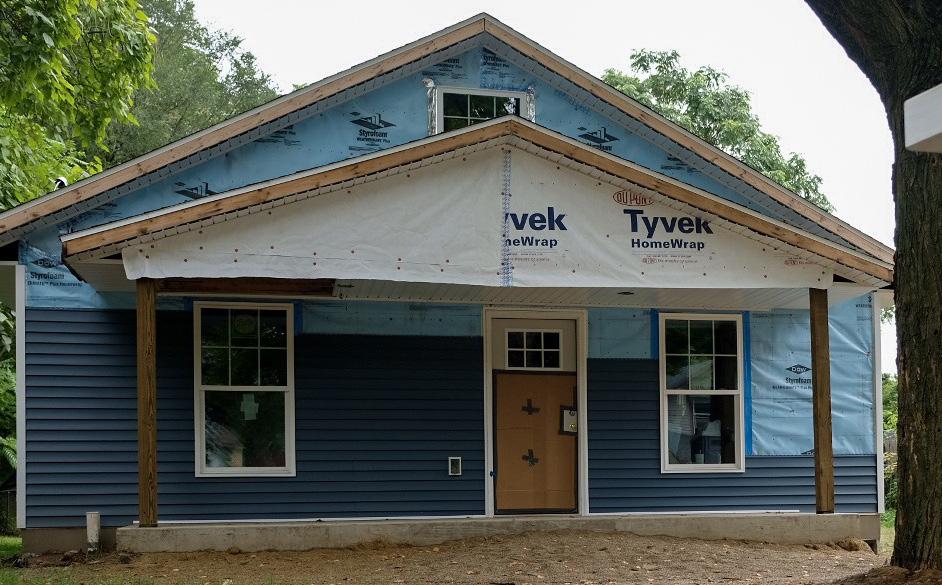
4 minute read
Investing in Housing for Everyone
Investing in Housing for Everyone
A safe, affordable home can be a key to individual and family well-being and wealth building, and the foundation for strong neighborhoods. And yet, in recent years, federal programs managed by the Department of Housing and Urban Development (HUD) for the creation of affordable housing have either ended or had major funding reductions. At the same time, programs meant to replace HUD do not adequately address our community’s needs. Developers that want to repair or improve affordable housing often do not have the resources and tools to make it work. Low and moderate-income families also find it difficult to access resources to invest in their own homes. Repairs are often essential given that 70% of Kalamazoo’s housing stock was built more than 70 years ago.
This is why the Foundation for Excellence has made it a priority to invest in affordable housing opportunities. The term “affordable housing” represents the generally accepted standard of spending not more than 30% of gross income on gross housing costs. Homeowners and renters that are paying more than 30% for housing are considered “burdened” by their housing costs. Imagine Kalamazoo 2025 called for action to address the City’s affordable housing needs.
In 2019, 137 affordable housing units were built, renovated, or are currently in progress through a partnership with the Local Initiative Support Corporation (LISC) and local housing non-profits, including Hope Network, Housing Resources Inc., Kalamazoo County Land Bank Authority, Kalamazoo County, Kalamazoo Neighborhood Housing Services, Kalamazoo Valley Habitat for Humanity, Northside Association for Community Development, Open Doors, Public Housing Commission, Residential Opportunities Inc., and the Vine Neighborhood Association. Together, they are a part of the Kalamazoo Affordable Housing Initiative (KAHI) to help make quality affordable housing available to residents with incomes at 80% of the Area Median Income (AMI) and below.

The FFE supports a housing strategy focused on five goals: expand the city’s housing supply; preserve and produce more affordable housing; catalyze neighborhood revitalization; minimize displacement and housing hardship; and nurture diverse communities. Housing entities working with LISC participate in community meetings and events, including many related to the City’s “Imagine Kalamazoo” and “Shared Prosperity Kalamazoo” initiatives. LISC and the KAHI are making equity, inclusion, and diversity a priority.
Additional work is being done to support the building and renovation of units, including homeowner foreclosure prevention, assistance with clouded titles to homes, and expanding credit availability in the mortgage market to sustain homeownership for communities of color. Other strategies aimed to increase homeownership for people of color include addressing the income and wealth gap and reducing the burden of high rents that undermine financial stability and hinder savings.

A new home built in
Investing in Housing at the Block Level
Residents of Ada Street in Kalamazoo’s Northside Neighborhood have organized home and block improvement projects.
“Community partners are working hard to support their vision,” said Carrie Drake of Building Blocks of Kalamazoo.
The project really gained momentum in 2018 when Mothers of Hope acquired a house on Ada Street through the Land Bank. Residents began door knocking and bringing people together to talk about a vision for the block. Building Blocks was contacted by the resident group to build a diverse presence of residents and partners. Building Blocks was able to use funding in the fall of 2018 to begin planning work, and by the spring of 2019 there was a list of things that residents wanted to accomplish between Ada and Florence, and the cross streets Burrel and Woodbury. LISC identified funds for 2019 to execute the list of home improvements: Kalamazoo Neighborhood Housing Services did roofing, Community Homeworks did critical interior home repairs, Senior Services has been responsible for other interior improvements, and The American Red Cross has provided support with installing smoke detectors. The City additionally supported the project by accelerating demolition of blighted homes identified by residents. This project is an excellent example of how partnerships can help homeowners increase the value of their asset and beautify their streets.

Encouraging Private Investment in Housing
In addition to direct partnerships at the house or block level, through incentives like Payments In Lieu of Taxes (PILOTs) and other tax incentives, the City of Kalamazoo works with private developers to incorporate affordable housing into larger scale projects. These incentives make it possible to include affordable units in developments in which they might not otherwise be possible.
There are several large developments currently underway in the City that illustrate this, such as the Creamery Project located in the Edison Neighborhood. The project was made possible in part due to a PILOT approved by the City Commission, tax incentives from the City of Kalamazoo Brownfield Redevelopment Authority, state housing incentives, and support from the Foundation for Excellence through the partnership with LISC. The project includes mixed-income housing units including 15 units reserved for households at 30% AMI or lower.

The Creamery, a project currently underway in the Edison Neighborhood.
Harrison Circle, an affordable housing development planned in the River’s Edge District of the Northside Neighborhood, is another example. Of the development’s 80 units, 64 will be for households ranging from 30-80% AMI. The Harrison Circle Development also benefitted from a PILOT approved by the City Commission as well as other incentives from the Michigan State Housing Development Authority and support from the Brownfield Redevelopment Authority.
Preserving affordable single-family homes, renovating existing units, and incentivizing private developments are all important components to creating diverse and affordable housing options for everyone in our city.


